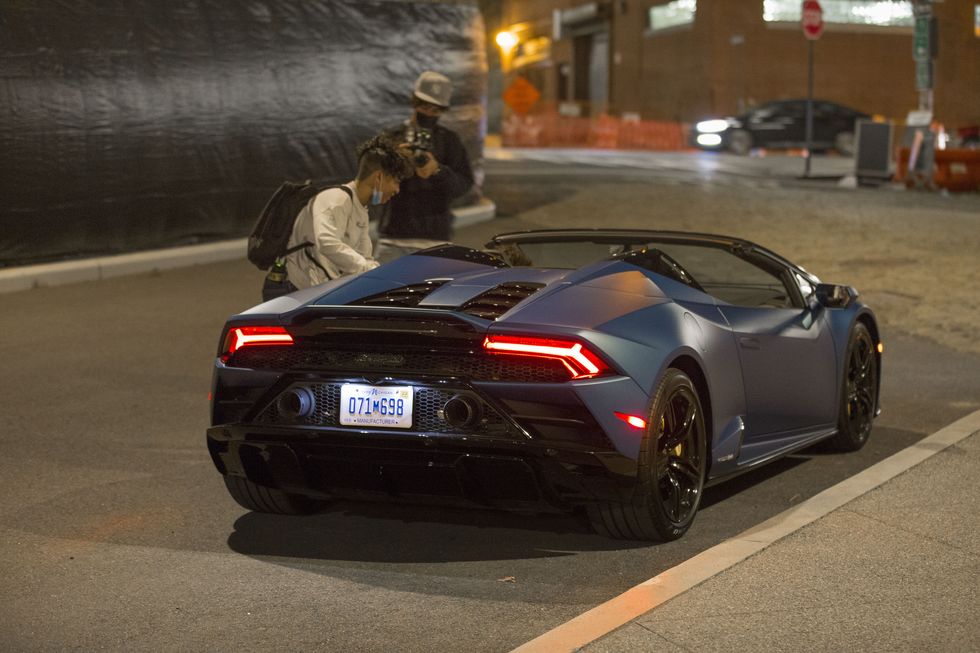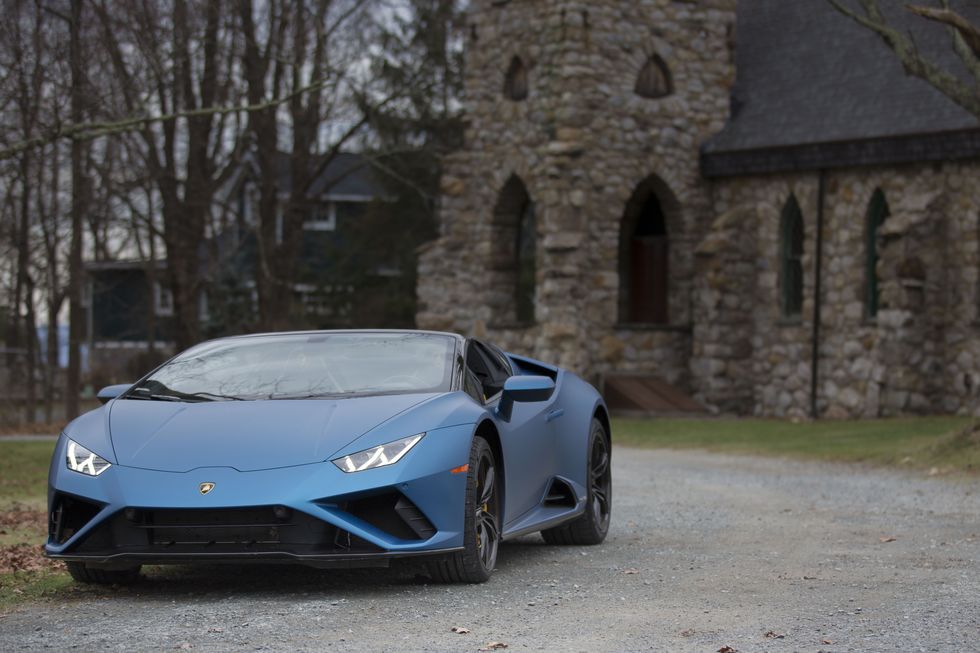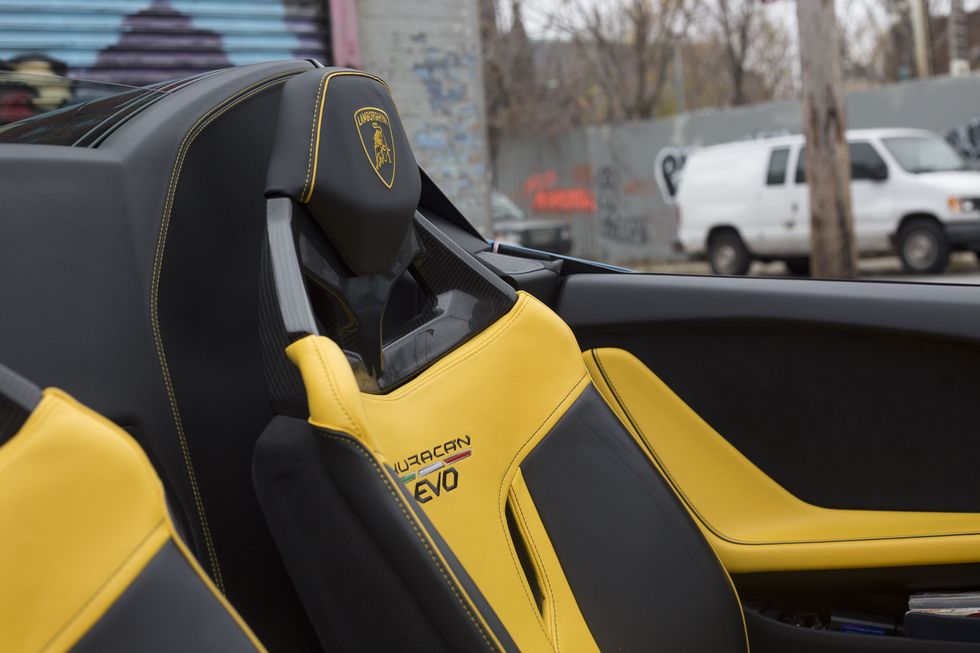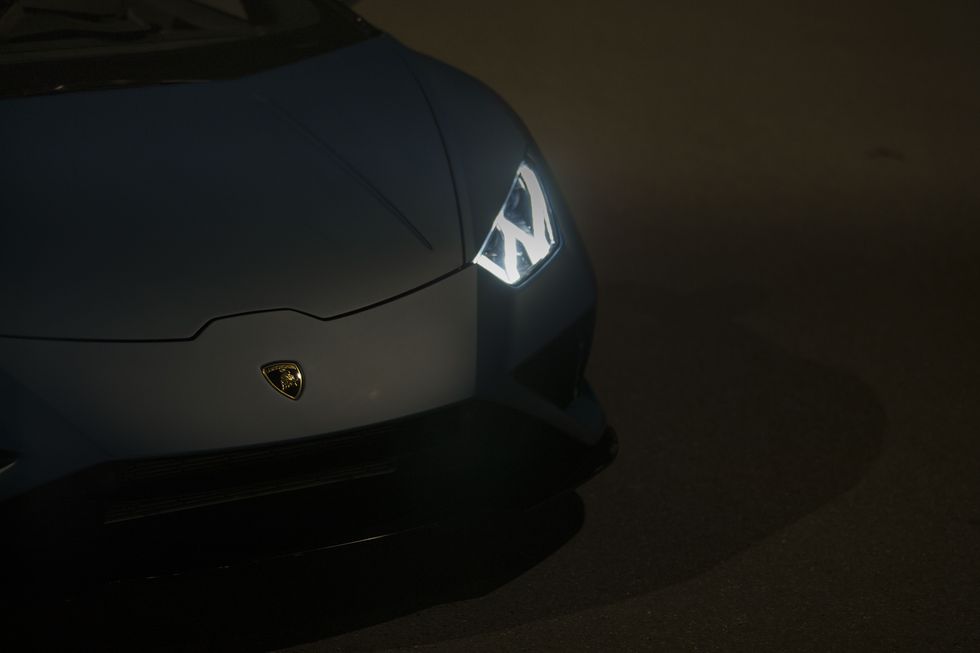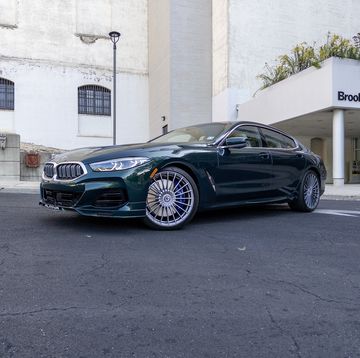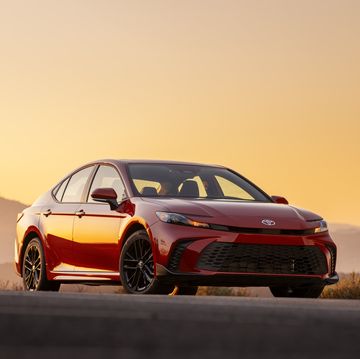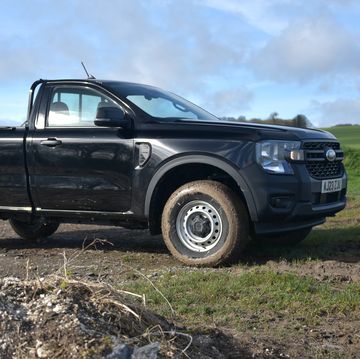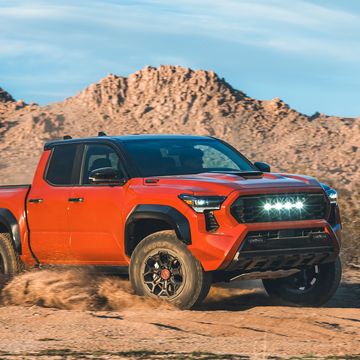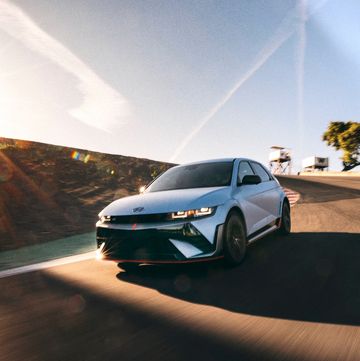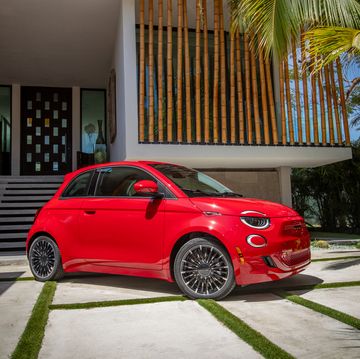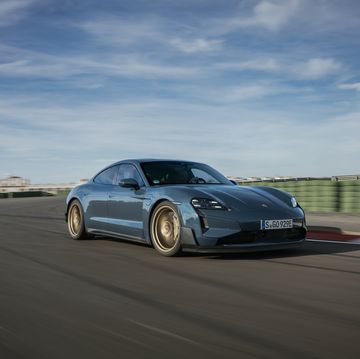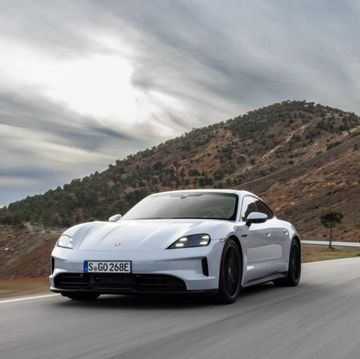Firework. Silly. Missile. Hilarious. Competent. Obnoxious. Agile. Explosive. Dialed-in. These words all came to mind after stepping out of the rear-wheel-drive Lamborghini Huracán Evo Spyder.
Notice "stealth" isn't one of those.
There's no hiding behind the wheel of a Mehit Blue Lamborghini. That's especially the case while rolling between New York City traffic lights with Sport mode engaged. The exhaust opens up. Crackles ensue. Manic laughter from the driver's seat follows.
The Huracán is theater. It has presence. Even without its 610-hp V-10 thundering, popping off-throttle, resonating off city buildings, it becomes a rolling tourist attraction. Onlookers can't get enough. Park it and children, their parents, their parent’s parents, all want to know about it. No matter where you are. No matter what time of day it is. It brings out its own form of automotive excitement from all aspects of life. Its sharp-angled design is a siren call for attention.
Behind the wheel of the Huracán you become part of everyone else's day. It's impossible not to attract attention. Even in New York City, where seeing exotic cars rush down avenues is a relatively common occurrence, the Huracán still manages to garner long looks, start conversations, and inspire a little automotive passion. Associate editor Mack Hogan was even approached for some sort of TikTok vlog while sitting in the car. People simply want to be near this thing. You can’t blame them. It's exciting.
You have to exit the city to truly grasp the Huracán Evo's performance capabilities. To get to know the Spyder better I set off north with a friend to put the $295,000 (as optioned) open-roofed supercar to the test, slicing through Hudson Valley backroads and cruising through views.
Once presented with a clear set of twisties, I dialed in my focus. The Huracán had no issue taking on the roads if its quick-shifting seven-speed dual-clutch gearbox was kept between second and fourth gear. The only problem, as is naturally the case with 600-hp cars, was constantly finding myself in danger of potential incarceration, bouncing off the border between right and wrong in the world of public driving. The Lamborghini, of course, didn't care. To make things even worse, the V-10's aural eruptions were even more addicting when resonating off of the forests along the road. The temptation for speed was strong and borderline overpowering.
The Huracán carried itself with speed, grace, and confidence at every corner. I drove with respect and awareness of how a high-powered rear-wheel-drive mid-engine car can bite if carelessly thrashed, especially on cold autumn pavement. With that at the front of my mind, the Spyder was happy to give me a taste of its capabilities.
As Road & Track contributor Matt Farah explained in his writeup of the Evo RWD coupe, the Huracán doesn’t suddenly become uncontrollable without all-wheel drive. If anything, the lack of power in the front adds to the driving experience.
“Removing the front differential doesn’t suddenly make the Evo RWD a crazy drift machine,” Farah wrote in October 2020. It simply removes some of the muting from the steering of the all-wheel-drive car.”
Even as a convertible, the Huracán holds up as an impressive performance car. Due to cold temperatures and, well, public road speed limits, I couldn’t get a feel for the car anywhere near its limits. But, within the realm of responsible driving, it gripped, and gripped, and gripped. As it should. Its electric power steering system allowed for direct and immediate inputs through its well-weighted wheel, with the car left in sport mode.
As clearly defined and required by the Unofficial International Law of Open-Roofed Cars, the Spyder's roof remained stowed behind the cabin at all times while in motion, except for during times of severe sub-45-degree discomfort.
Equipped as it was with Lamborghini's $7,500 sport seat option, which mainly appeared to be constructed of carbon fiber, leather, pricey stitching, and mild padding, the Spyder wasn't the most comfortable of rides. For day trips such as ours, I would prefer the electrically heated seat option. If you're going top-down in the fall, you need your seats warmed.
There are other pain points in the Huracán's interior. Though the center-mounted infotainment touchscreen was relatively easy to navigate when parked, it was a total pain to fiddle with while driving. For volume control, the car uses a touch slider, which is almost impossible to use while in motion if you’re focused on the road, especially as the screen itself is mounted at an inconvenient angle. In the general scheme of the car, it's a small gripe, but one that becomes increasingly annoying as more time passes and you accidentally bring the slider from 20 percent to 100 percent multiple times. And no, there are no steering wheel controls.
It does feel a bit wrong to knock a Lamborghini because its radio is a little hard to use. Like, yeah. It's a Lamborghini. At least it has a radio (and Apple CarPlay!), but since it's there, it should be a little more user-friendly.
In truth, those who are shopping for a Lamborghini probably don't have radio usability at the top of their mind. They're in it for the excitement, the brashness, the speed, the thrill, and the Lamborghini-ness of it all. On those marks, the Huracán Evo Spyder doesn't disappoint.
A native of the famously car-loving city of New York, Road & Track’s digital director is constantly surrounded by beat-up old project cars. His fleet currently consists of a problematic manual-swapped 1991 BMW 325i sedan, an E34 M5 of the same vintage, an M2, and a Lexus GX470. Before R&T, Brown worked at Jalopnik, The Drive, and Business Insider.


